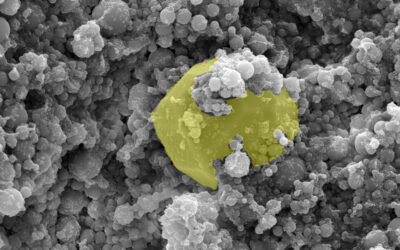Lithium-ion batteries are promising candidates for future energy storage applications like electric vehicles. Nonetheless, currently commercialized li-ion batteries suffer on the one hand from safety issues and on the other hand from low energy capacity. For a reasonable application of li-ion batteries in future application fields these issues have to be solved and one possibility to achieve this is the design of new electrode materials. Generally transition metal oxides are adequate candidates. The use of nano-sized material provides short li-ion diffusion lengths. However, the challenge of these materials is their low electronic conductivity. Thus conductive pathways (e.g. from carbonaceous materials) within the nanostructured transition metal oxide electrode are desirable. A homogenous carbon coating would, thereby, be especially attractive, as it can protect the electrode material in addition from degradation.
A new approach to create such a homogeneous carbon coating on the surface of titanium dioxide nanoparticles (as a possible electrode material) has been developed by research teams in Mainz and Muenster (Germany). The synthetic approach, which was conducted in Mainz, involves the grafting of a carbon precursor polymer onto the nanoparticle surface. This approach is enabled by the synthesis of a new polyacrylonitrile block copolymer with a short anchoring block, to allow coordination of the polymer onto the nanoparticle surface. AFM-measurements show the homogenous coating of the TiO2 nanoparticles. Thereafter the carbon precursor can be transformed into carbonaceous conductive structures on the surface of the nanoparticles resulting in a homogeneous carbon coating.
The research team in Muenster investigated such a nanostructured material, which, compared to the uncoated one (i.e., pristine TiO2 nanoparticles), shows a substantially improved reversibility and kinetics of the Li+ ion insertion and deinsertion processes. Remarkably, the carbon coating appears to prevent a structural degradation process occurring in uncoated anatase TiO2 nanorods upon continuous lithium insertion-deinsertion cycles.
These results demonstrate the advantage of a homogeneous carbon coating on nano-sized electrode materials.
















